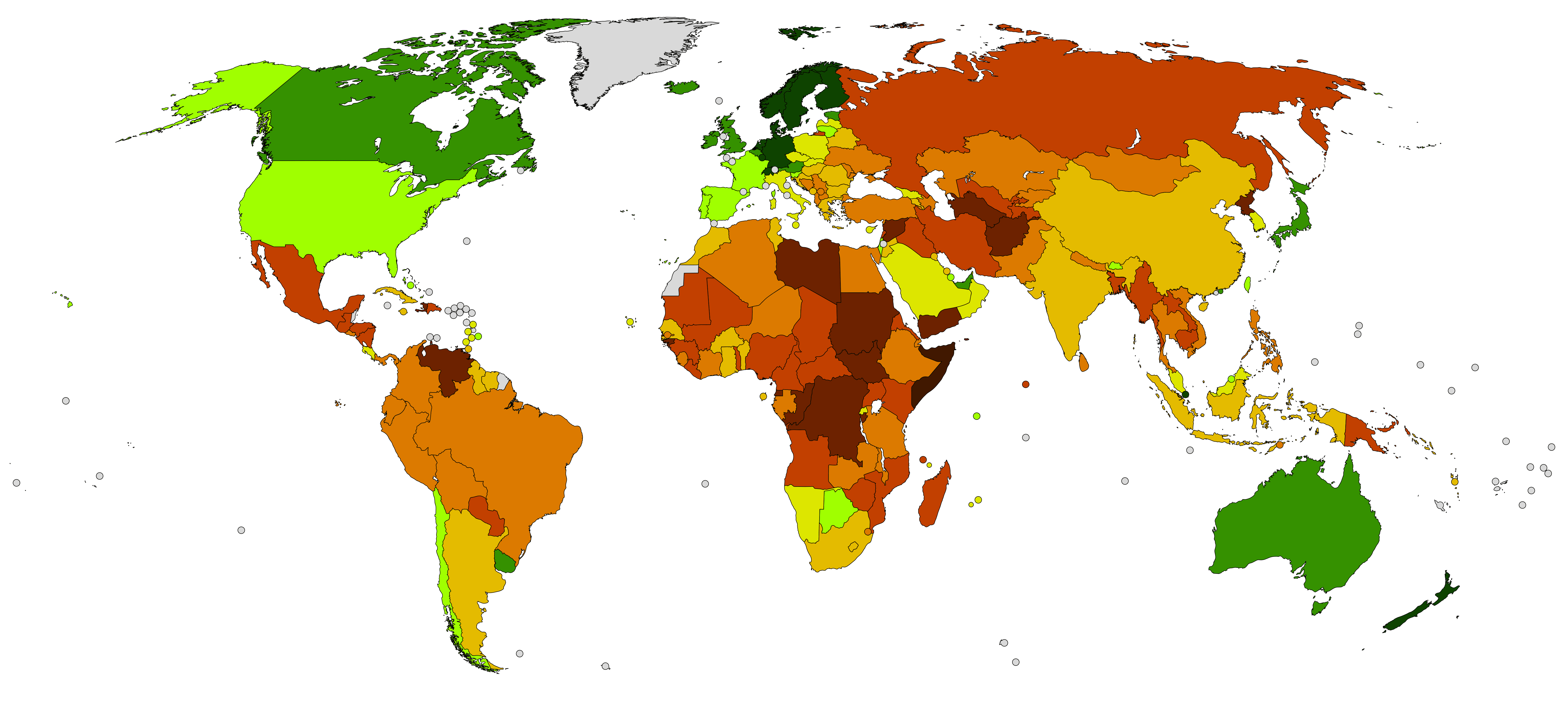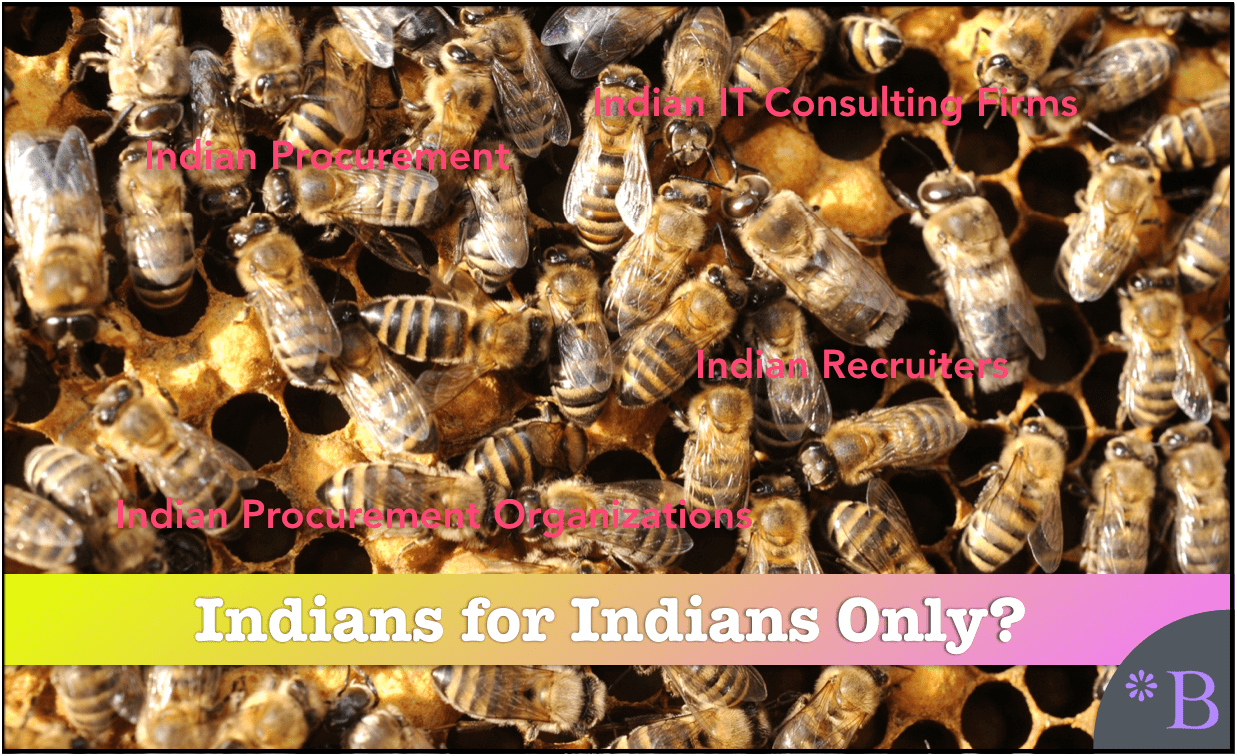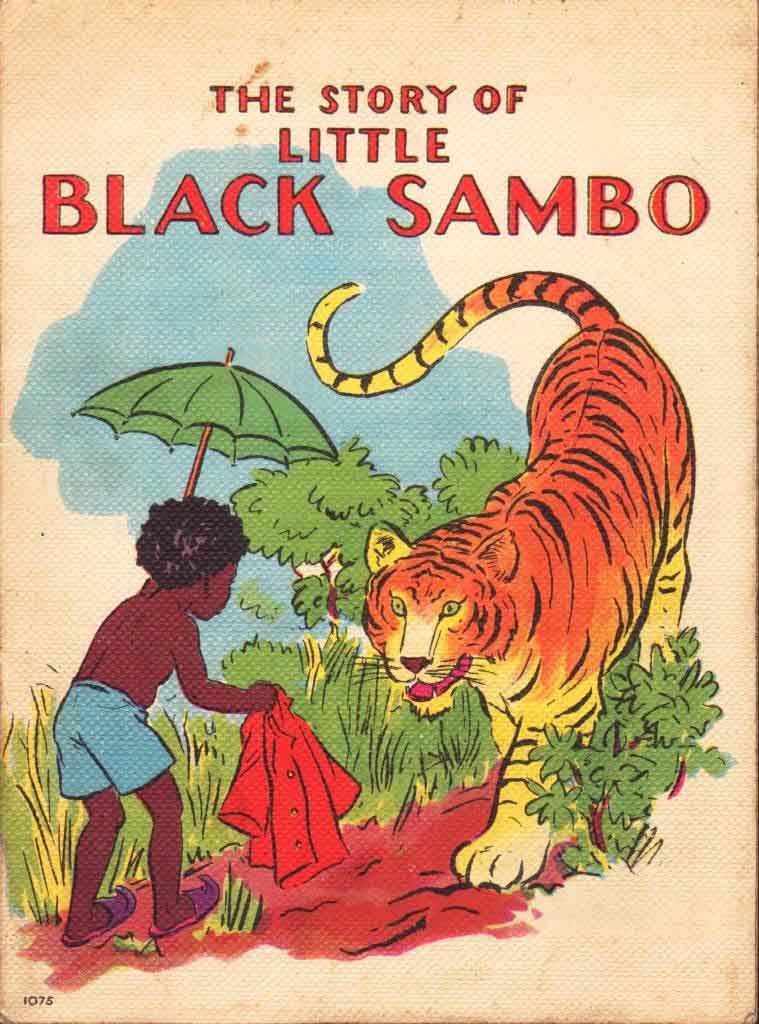The Problem With Indian Procurement and Indians as GateKeepers for US IT Purchases
Executive Summary
- Indian immigrants have taken IT by storm since the H1-B program was enlarged beyond its original intent in 1990.
- Meant to be brought in for technical roles, Indians are becoming increasingly influential in IT purchases and bringing Indian procurement.

Introduction
Indians have been accepted very rapidly in the US and into all manner of jobs, without native-born US citizens having much of an understanding of Indian culture or how things work in India. Corruption is second nature in Indian procurement. Now this culture has been brought to the US.
Understanding India
India ranks 80th on the Transparency.org website for levels of corruption in the world, while the US ranks as 23rd. See the graphic below for the most and least corrupt countries, with the least corrupt countries being green, and the most being red.

This means that one cannot assume, as most native-born US citizens do, that once Indians work in the US, they will automatically follow the standards of corruption of the US. So far, the behavior of Indians in IT has been highly distinct from that of native-born US citizens.
Indian immigration has already been a significant force for increasing corruption in everything from bonded labor. We cover in the article How Indian IT is Bringing Bonded Labor to the US, to labor exploitation, to discrimination by Indians against natural-born US citizens as we cover in the article How Indian IT Workers Discriminate Against Non-Indian Workers.
The Problem With a History of Paying and Taking Bribes
Bribes are common in India. Most Indians who come to the US have paid bribes at some time in their lives in India, and most will have paid many bribes in their life. In an average year, most of the Indian population, according to surveys by Transparency.org, will end up paying a bribe. Transparency.org did not ask, but it would seem reasonable that a decent percentage of Indians take bribes or ask to be bribed.
Therefore, when Indians work in procurement or have some say or influence over procurement, they bring this orientation with them.
The Problem with Indian Discrimination
Beyond bribes, there is an even more significant issue with Indians showing a long-term and well-documented pattern of discriminating against non-Indian suppliers in favor of Indian suppliers. This is true at the individual level, as well as at the firm level (that is, Indian-dominated firms versus non-Indian-dominated). This means that when Indians are in a position to influence a procurement decision, it is infrequent that the non-Indian offering will be selected. This has little to do with the fit of the item in question to the requirements but is a selection based upon whether the offering is Indian or an Indian company. This is found very clearly in Indian IT recruiting, where Indian recruiting firms prefer to place Indian candidates. Indian recruiters have little interest in placing non-Indian resources, Their technique is to show non-Indian candidates to their clients as a way to pretend they are not discriminating against non-Indian candidates, but then stacking the deck in favor of Indian candidates (sometimes by taking skills from the resumes of non-Indian candidates and placing them on the resumes of Indian candidates, as we cover in the article Why Dealing with Indian Recruiters is Futile for Domestic Workers.)
Lying as a Natural Part of IT Recruiting
The amount of lying in Indian recruiting is extraordinary for a US-born citizen. This is why Indian recruiters are known as places where “resumes go to die” if you are not Indian. This would be less of a problem, but Indian recruiters have come to dominate the contract market (at least) in IT recruiting, as we cover in the article The Frightening Rise of the Indian Recruiters in IT. The entire rise of Indian recruiting in the US is odd when one considers that people who have feeble English skills (Indians who work in recruiting have noticeably weaker English skills than, say, Indian IT consultants and generally have lower education levels) are placing US citizens (or presenting to) into US companies?
Both US IT directors and US IT workers (including Indians) have complained about how bad Indian recruiters are. Yet, they have somehow managed to dominate a large sector of IT recruiting. That is not competing on quality. There is some other factor at work.
The Indian Domination of IT
Indians have not followed a regular pattern of immigration into the US. They have instead come to dominate the IT sector and to apply Indian rules to how the sector works. The result is that all non-Indians (unless they exploit Indian labor) have lost from this situation.
This pattern is set to only continue along its present course. If one visits IT departments or IT companies, the differences in the ages of Indian and non-Indian workers are apparent. The Indian workers are younger, and the non-Indian or native population is older. This, combined with Indians consuming an ever-larger percentage of the H1-B program (such as with the passage of the HR1044 adjustment to the H1-B program in favor of Indians), every year that passes, Indian dominance in IT will grow. The dominance is to the degree where it is increasingly considered accepted to speak Hindi or other local Indian dialects in the office. The experience is increasingly off-putting for anyone but an Indian (and maybe some Indians too; not all Indians I have spoken with are on board with the total Indianification of IT). We can most certainly expect an exodus from IT on the part of non-Indians in the future as IT is increasingly hostile to non-Indian workers.
Each Indian in the US has many friends back in India who want to come to the US and ask the Indians in the US to help them. The only way for Indians to be faithful to their friends is to help them displace US workers. Indians could try to change their society to have labor standards, reduce income inequality, and reduce corruption, but why when you can immigrate to a country where all of this has already been done for you? Then, the next generation of Indians can be raised in the same system.
“I have to get out of here.”
Seven decades after independence from India, the primary hope of Indians is to immigrate from India, so much for the post-independence excitement.

Indians don’t behave as do most of the US working population. The best analogy is a hive mentality. The hive is Indians who work together but against the domestic US population.
The US already had a highly collaborative system where American workers functioned more or less as individuals — with the higher-level executives being more “cliquish.” Through this behavior, Indians are breaking down the well-functioning US system that took many decades to develop into a system with merit being considered an essential element. By dominating an area (hence, making it more diverse?) and then discriminating against the rest of the population (a pattern repeated in Singapore, Canada, Australia, and Europe). Now, the rest of the population has to worry about no longer acting as individuals but behaving more like Indians to create their own “hives” to combat the Indian “hive.”
Breaking the Trust of a High Trust Society
If Indians want to hire Indians, hire Indian suppliers, make US companies as Indian as possible, have Indian-based companies that operate in the US that are almost entirely Indian (as we cover in the article The Amazing Fact That 99.7% of Tata Consulting is Indian), apply Indian labor standards (as we cover in the article How Infosys and Tata Keep Indentured H1-Bs)..why did Indians migrate to a non-Indian country?
That is why not stay in India?
The answer is obvious: Indian culture is so intensely tribal, such a low-trust society, that the society cannot prosper when a significant percentage of the population acts this way. Indians must migrate to a country where most of the population does not act unequally. And it is just so easy to bring an intensely tribal behavior pattern to a high-trust society.
Indians seek to and are effectively parasitizing a European-based country that does not have the natural defenses against them.
Don’t be “Racist”
Indian discrimination is considered something that should not be pointed out, as it is seen as “racist.” All whites in the US and in Europe, Australia, New Zealand, and Canada know that their freedom of speech is now entirely secondary in importance to the tyranny of the politically correct. The right to not be offended or to adhere to PC is nowhere in US law. However, most of the white populations in the named countries have agreed to give up their freedom of speech so that they can receive the knowing social approval of being politically correct.
Under this construct, corporate environmental destruction, labor exploitation, greed, and the rest of the sins are a distant second to the most terrible accusation that one can receive….the accusation of racism. The term has also changed in its meaning, from believing that other races are lower than your race and, therefore, should be dominated by your race to being any observation regarding cultural differences. Original racists proposed “genetic” differences, not cultural differences. Phrenology, or example, is the study of head configurations to determine criminality. It, like racism, is a biological construct, not a cultural construct.
Hitler did not think that Jesse Owens could not do well in the 1936 Olympics because Jesse Owens was trained in an inferior black culture, but because Jesse Owens was inferior biologically.

The term racism has been heavily weaponized against whites and from unreliable sources. The book Little Black Sambo is a story about an Indian boy who is confronted by tigers, who eventually chase each other around a tree until the tigers become a sort of pancake batter. The boy then makes pancakes from this “tiger batter” for his family.
According to several people, this story is also racist. The boy is Indian, so why is he “black.” (what a terrible affront, although, white people are not actually “white” but more pinkish, so perhaps we should be similarly offended)
There is supposedly all of this racist meaning in the story — which entirely eluded me somehow when I read this story as a kid. It must be very, very subtle. I only learned it was racist after I was told it was racist.
How about the poor tigers?
They ended up turning into pancake batter and were eaten. It seems more “speciest” than racist.

There was a restaurant called Sambos. It had to change its name because of the accusations against the book. Can you see the racism in this restaurant? Sambo is depicted in the restaurant as having light skin but now wearing a Dastar. So he is not black anymore, but perhaps Sikh. How terrible. Hopefully, the entire restaurant was burned to the ground.
This type of complaining only works in white societies. If you try to bring up racism in non-white societies, it’s a difficult “business model” because racism only works to create guilt in white societies.
Try going to Malaysia, Fiji, Tanzania (or India) and complaining about any racism and prepare to be met with indifference.
A New and Wholly Inaccurate Definition of the Term Racism
The “new” and “adjusted” definition of racism is entirely ignorant of the term’s meaning and has morphed into any criticism of a non-white individual by a white individual. Under this “adjusted definition,” roughly 15% of the world population is held to ethical standards of behavior. In comparison, the rest, or 85% of the world population, has a race card that can be played at the first hint of criticism. Don’t believe it? Here is a perfect example. Right now, Indian, Pakistani, and other South East Asian labor is kept in borderline slave conditions in Middle Eastern countries like Qatar and Bahrain. However, we have very little media coverage of this. These workers have no rights and can’t leave the country…why is this not pointed out? Again, the Middle East is held to no ethical standards. And wouldn’t pointing it out be “a little bit racist?”
The only opening is when a non-white person critiques another non-white person — then criticism can be said to be not racist.
This is illustrated in the article How H1-B Indians Create a Hostile Work Environment for Women, where I outline that feminists frequently have decried the fact that women tend to drop out of STEM fields within ten years of graduation. However, the article How The H1-Bs Are Pushing Out Domestic US Workers of IT and STEM, points out that most male STEM graduates also leave the STEM field within ten years of graduation; feminists and journalists have nothing to say. As long as the narrative is sexist white men pushing women out of their chosen field, there aren’t enough articles that can be written. But when the story is (as it is in reality) domestic US STEM graduates of both sexes being pushed out by Indians and other foreign workers, now the attention of feminists seems to wander, and they become dissociative. In the mind of MS magazine, the biggest issues are how Hollywood starlets are treated who agree to take meetings with producers at 2:00 AM at the Peninsula Beverly Hills — women in non-white countries don’t matter much because, well, that would be racist to criticize those countries.
Furthermore, feminists are careful to focus on women’s “issues,” but men’s “issues” don’t exist or are part of the “patriarchy.” Whatever happens to men happens, it’s not the concern of feminists. Taking up time discussing problems men face only serves to take the spotlight away from women’s issues. Don’t be a narrow-minded bigot.
Feminists might like to point out that Indians generally don’t accept women as equals (back in India or the US), and that leads to strong discrimination against US-born female citizens, (in addition to discrimination by Indians against white men, but forget about them for now) however when the offender is not white, feminists don’t know what to do.
They become lost children, and their entire worldview falls apart.
Remember, the “patriarchy” globally is white. The biggest problem in Africa? The white patriarchy. It is insidious! The victim must be either a woman or a non-white.
Those are the rules.
Demurring in Situations Where There Are Indians in Procurement
Brightwork Research & Analysis is a company that deals with customers for things like research services. These prospects put me in touch with an Indian employee to follow up on possible business.
The problem?
I have never once received business from a company where the contact was Indian.
I have started telling prospects that I am not working with them if they make contact with an Indian. I know from that point, the Indian will never decide to select my company, so why am I wasting my time?
Dealing with White Guilt
I have felt compelled to take meetings in the past even though I realized I was being put into contact with an Indian that would never lead anywhere. Still, then I asked myself, why do I feel guilty for properly allocating my time rather than just handing it over to a company that intends to pretend that they are going through the process of evaluating Brightwork Research & Analysis? This is when the gatekeeper has no interest in recommending a non-Indian firm be hired for anything.
I have concluded that too many non-Indians are doing this. Indians have shown their hand in terms of how they will behave. Now it is time for non-Indians to call them and their employers out on it, and to refuse to be put through a time-wasting experience.
Thinking Indians Will Act Like Americans
The issue is that companies seem to think that the Indian will act like a native-born American. I have the right to follow up with customers and eschew others, and all companies have this right. I also have the right to tell the customer I don’t think an Indian procurement gatekeeper will give me a fair shake.
The company that hires Indians in procurement positions will eventually find that nearly all of their suppliers are Indian. And are these suppliers to be held to a standard?
Conclusion
Indians have brought an enormous amount of corruption with them from India, a country which Indians who immigrated to the US do not want to live in and where they complain about the corrupt nature of the country. However, once they arrive in the US, they repeat the same corrupt pattern they learned in India.
When non-Indian individuals and non-Indian companies compete for business, when there are Indians in procurement, they will be put at a disadvantage. Indians need to know that they are either being paid something or that you will hire a friend of theirs, or that you are helping to employ Indians.
All of this has happened in an extremely short time, and it is little discussed and seldom a published topic. The speed at which this has occurred means that this is set to become much worse. However, if non-Indian companies continue to pretend that Indian gatekeepers are funding as US-born citizens or non-Indians, it means continually losing business to Indian offerings.
References
https://en.wikipedia.org/wiki/Corruption_Perceptions_Index
https://www.cnn.com/2019/11/27/asia/india-corruption-bribe-intl-hnk-scli/index.html
https://en.wikipedia.org/wiki/The_Story_of_Little_Black_Sambo
https://economictimes.indiatimes.com/news/politics-and-nation/three-infosys-employees-held-for-taking-bribes-from-tax-payers/articleshow/74537982.cms